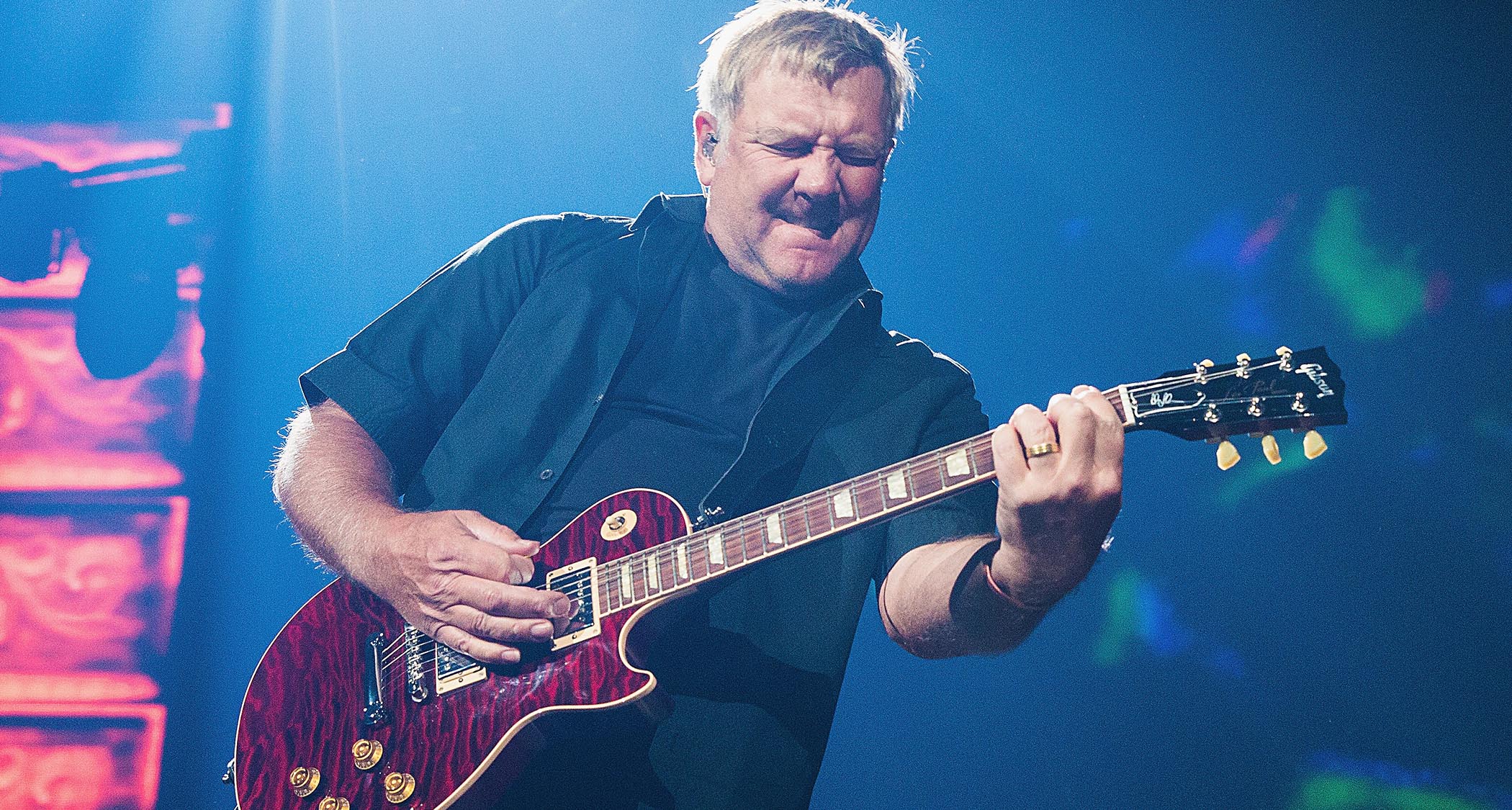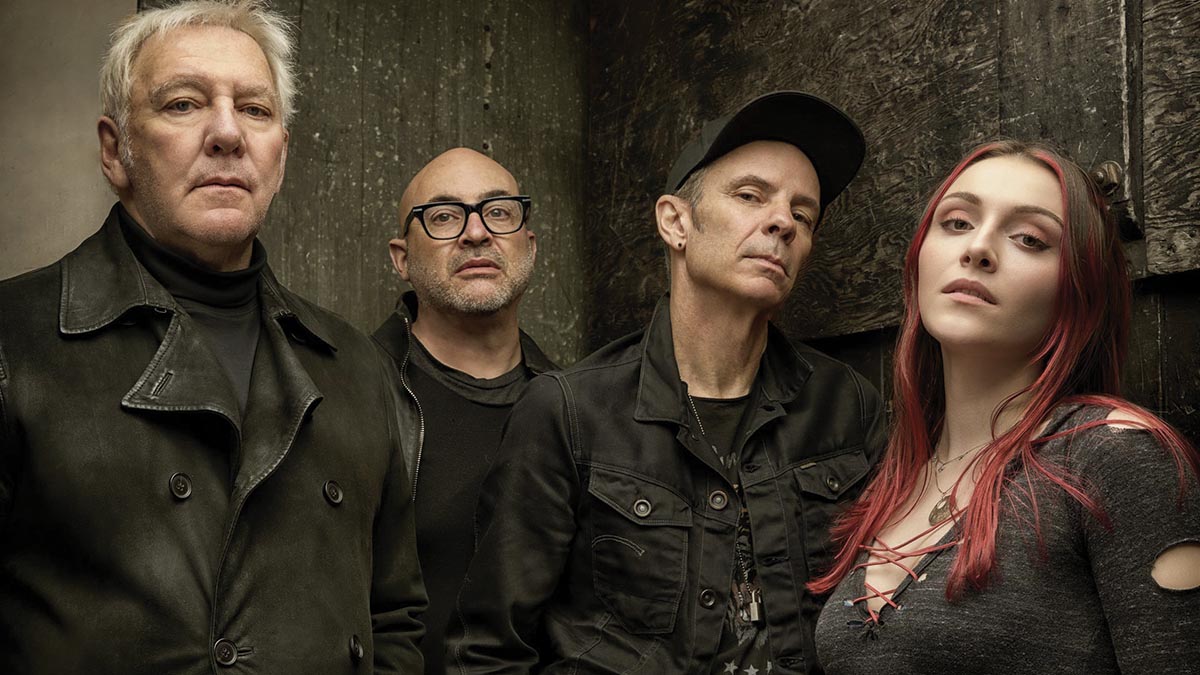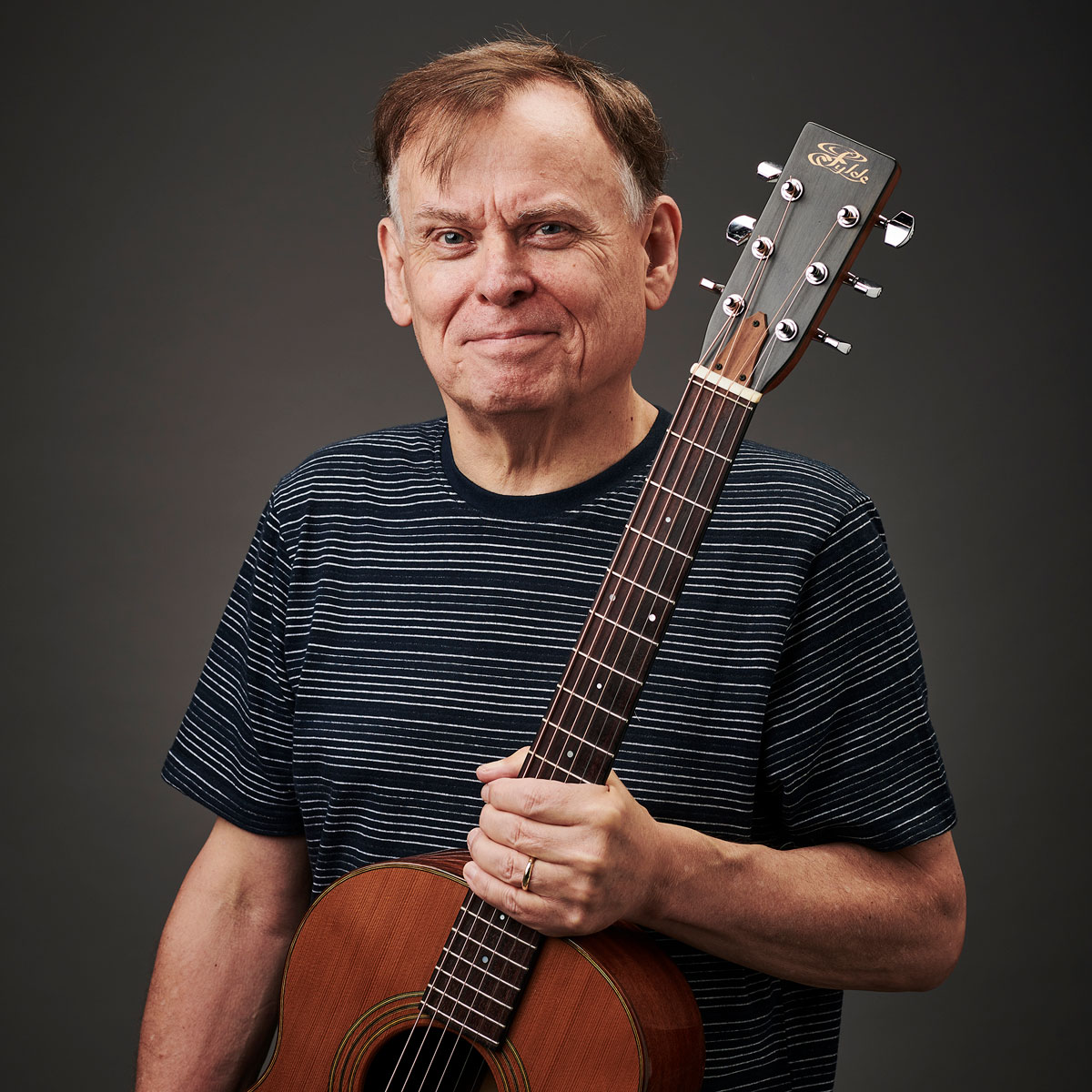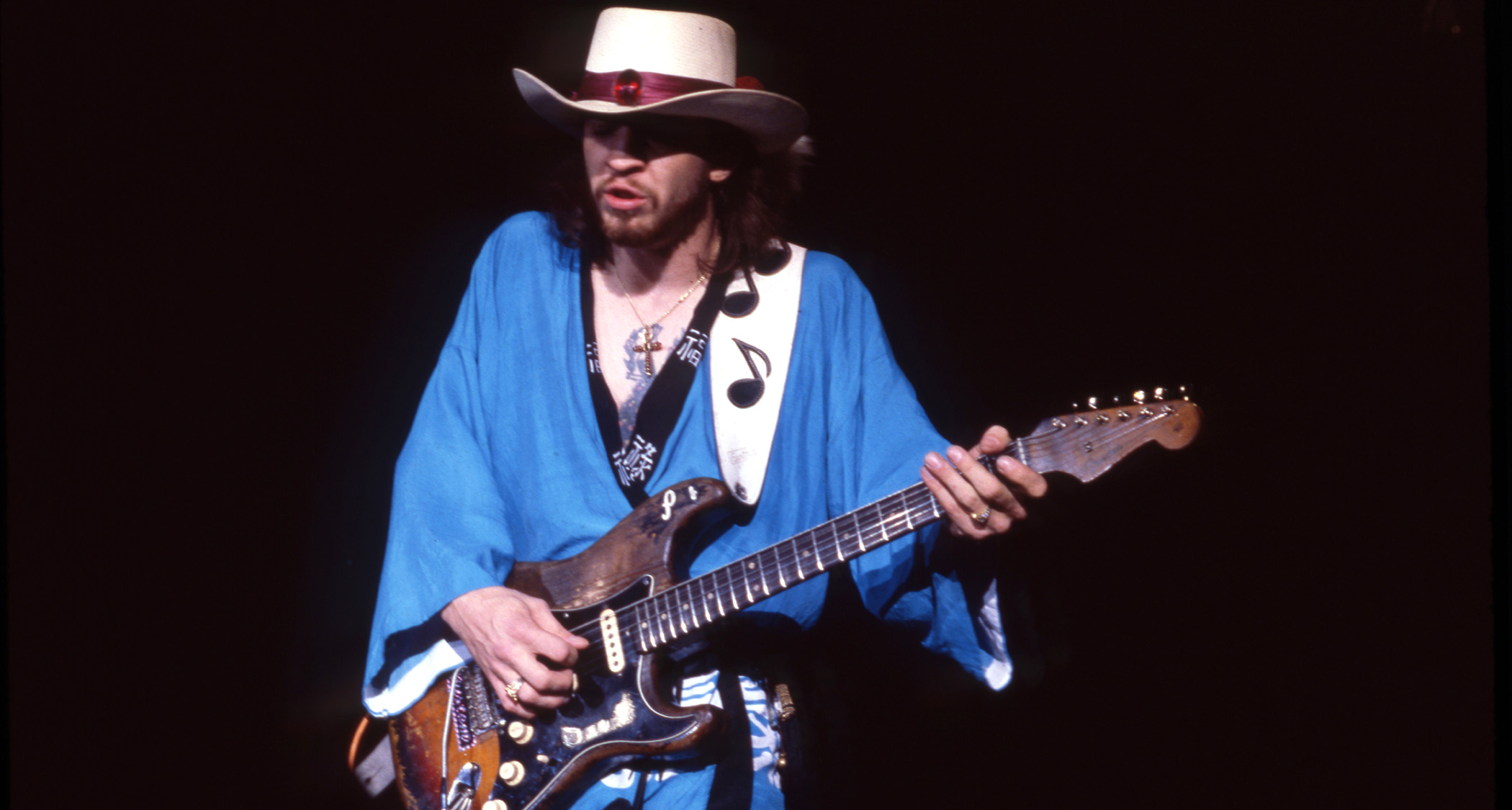“I try not to be Alex Lifeson from Rush… my days of shredding and playing like a crazy maniac are over. There are a million people on Instagram that do that now”: Alex Lifeson on throwing sonic curveballs with Envy of None – and why he’s all in on plugins
As Alex Lifeson launches the second album from his latest prog project, Envy of None, we delve deep into the mists of its sonic landscape

For a band that has never played a gig together, Envy of None have gained an increasingly high profile since the release of their eponymous debut album in 2022. After that record’s success, the band were eager to keep the momentum up and so Stygian Wavz was released earlier this year.
The tracks have gathered plenty of critical acclaim with their crafted blend of prog and pop and some superbly ethereal vocals from Maiah Wynne. Guitar duties fell once again to Alex Lifeson, but first of all we were intrigued to find out how the band was born.
How did Envy of None first come about?
“After Rush finished our last tour in 2015 I kept playing and doing a bit of writing and [bassist] Andy Curran reached out and asked if I could put some guitars on some stuff that he was working on. One of those songs was a song called Liar, which is on the first record.
“So I did that. I didn’t spend much time on it, just some rough guides. In the meantime, he was asked to be a judge in a talent contest, and [vocalist] Maiah was a contestant. He said to Maiah, ‘The best thing for you is to go out, meet other musicians, work with other people and get a sense of what your skills are.’”

“And she said, ‘Well, I Googled you and I know your background, so why don’t we work on a song together?’ And he sent that song Liar back to me after she did her vocals and he said, ‘You gotta listen to this!’ I was blown away by her voice, and I immediately said to Andy, ‘Erase everything I did. I’m gonna redo all the guitars. We have to work with this girl, she’s amazing.’ And then it just kind of went from there.
“We added a couple more songs and then started talking about a record. So that was the first album, and we recorded it during the pandemic. We worked remotely and I think that’s great because it’s a very efficient way to work. We had so much fun making the record that we decided to start a second one almost immediately. We spent, I don’t know, probably a little over a year putting Stygian Wavz together. And here it is, finally.”
All the latest guitar news, interviews, lessons, reviews, deals and more, direct to your inbox!
Your guitar work on the album is very textural and atmospheric and shuns the centre-stage spotlight.
“I think that’s always been a part of me. I mean, I’ve always thought in those terms, you know? [In Rush] Geddy [Lee] and Neil [Peart] were really active as a rhythm section and it kind of forced me to pull back a bit. I thought, ‘If these guys are going to play like this, I can’t play like that anyway.’ It would be crazy and it wouldn’t service the song. So I really developed a style that’s more chordal and broad.
“I use chorus a lot in my sound, just to get a more expansive kind of tonality and character to the guitar sound, and it was perfect for Maiah. She’s a singer who has a beautiful, very nuanced voice that can sit on top of anything; the heaviest stuff, the darkest stuff, the bluesiest stuff… she just fits on anything, so it frees all of us up.”
![Envy of None: [from left] Alex Lifeson, Maiah Wynne, Alfio Annibalini and Andy Curran](https://cdn.mos.cms.futurecdn.net/SVgsnJJjMscich6QrStkwB.jpg)
“For me, I just love to approach guitar from a different angle. I love doing things that people don’t expect me to do. I try not to be Alex Lifeson from Rush, you know? I try to create sounds on a guitar that are not guitar-like, which is kind of fun, camouflaging the instrument. On this record, I’m playing a lot more traditional stuff.
“I’m actually soloing more, provided that it’s in service of the song. If the solo fits and does something to enhance, or plays a role in the arrangement of a song, then I’m all for it. But my days of shredding and playing like a crazy maniac are over. There are a million people on Instagram that do that now.”
Which guitars did you use on the album?
“It was a mix. I have two 335s, so I used both of those. I used a Rickenbacker 12-string on The Story choruses. I used two Les Pauls, my good old reliable ’57 Tele, and the Godin [Lerxst] Limelight – since I got that I’ve been using it quite a bit.
“For acoustics: Martins, Gibsons, Larrivées, and a PRS Angelus that they built for me, a beautiful, beautiful acoustic guitar. And a mandola and an oud [a Multi Oud Encore Nylon] that I got from Godin. It’s a fascinating instrument. Really went down a rabbit hole with that one, but it’s fun to explore an instrument that you don’t really know how to play!”
You were saying that you enjoy camouflaging your guitar sound – which effects did you use in the process?
“I used my good old [Electro-Harmonix] Electric Mistress for a bunch of stuff and a lot of plug-in effects that are a little wilder and crazier. I think I used a Big Muff for something, and a [Boss OC-2] Octaver, which I came across in our storage that I used back in the ’80s. Anything I can get my hands on, I try to incorporate it. But I would say mostly plugins, you know, because they tend to be the wilder kind of manipulators.”
Which amps did you use for the album?
You know, it’s not easy to just go and do a gig. It’s not like you grab your gear, jump in a van and go to a place and play. We have never played together
“I have two amps in my studio currently: a Bogner and a Mesa/Boogie Mark V. And then I have a single 12 Celestion cabinet that I can mic. Plug-ins are getting way better; I did a thing recently with the [IK Multimedia] Tonex people where they sampled all the amps I have [for the Alex Lifeson Legacy Signature Collection].
“I was really impressed with how great they sound. I guess they’re using AI to do the sampling, but there’s depth. They’ve really nailed the bottom-end of what a cabinet and a speaker does.
“I also got a bunch of [UAFX] amp pedals from Universal Audio: the Dream [’65 Reverb Amplifier], the Enigmatic [’82 Overdrive Special Amp] and there’s another one called the Lion [’68 Super Lead Amp], which is sort of a Marshall thing. If I’m going to do a session somewhere, I just grab a few of these and toss them in a bag and go to the session or the gig, just like that.”

Are there plans for Envy of None to tour the new album?
“We’ve been talking about it. You know, it’s not easy to just go and do a gig. It’s not like you grab your gear, jump in a van and go to a place and play. We have never played together, so we’d need to put together a set from the two albums. There’s a lot of work involved to even consider doing some dates.
“But having said that, we would love to because, in our minds, we can see what an amazing couple of hours it would be if we were to do those first two records in a live situation. A nice theatre with a nice PA and a very subtle light show. I think that would be great.”
- Stygian Waves is out now via Kscope.
- This article first appeared in Guitarist. Subscribe and save.
With over 30 years’ experience writing for guitar magazines, including at one time occupying the role of editor for Guitarist and Guitar Techniques, David is also the best-selling author of a number of guitar books for Sanctuary Publishing, Music Sales, Mel Bay and Hal Leonard. As a player he has performed with blues sax legend Dick Heckstall-Smith, played rock ’n’ roll in Marty Wilde’s band, duetted with Martin Taylor and taken part in charity gigs backing Gary Moore, Bernie Marsden and Robbie McIntosh, among others. An avid composer of acoustic guitar instrumentals, he has released two acclaimed albums, Nocturnal and Arboretum.
You must confirm your public display name before commenting
Please logout and then login again, you will then be prompted to enter your display name.




